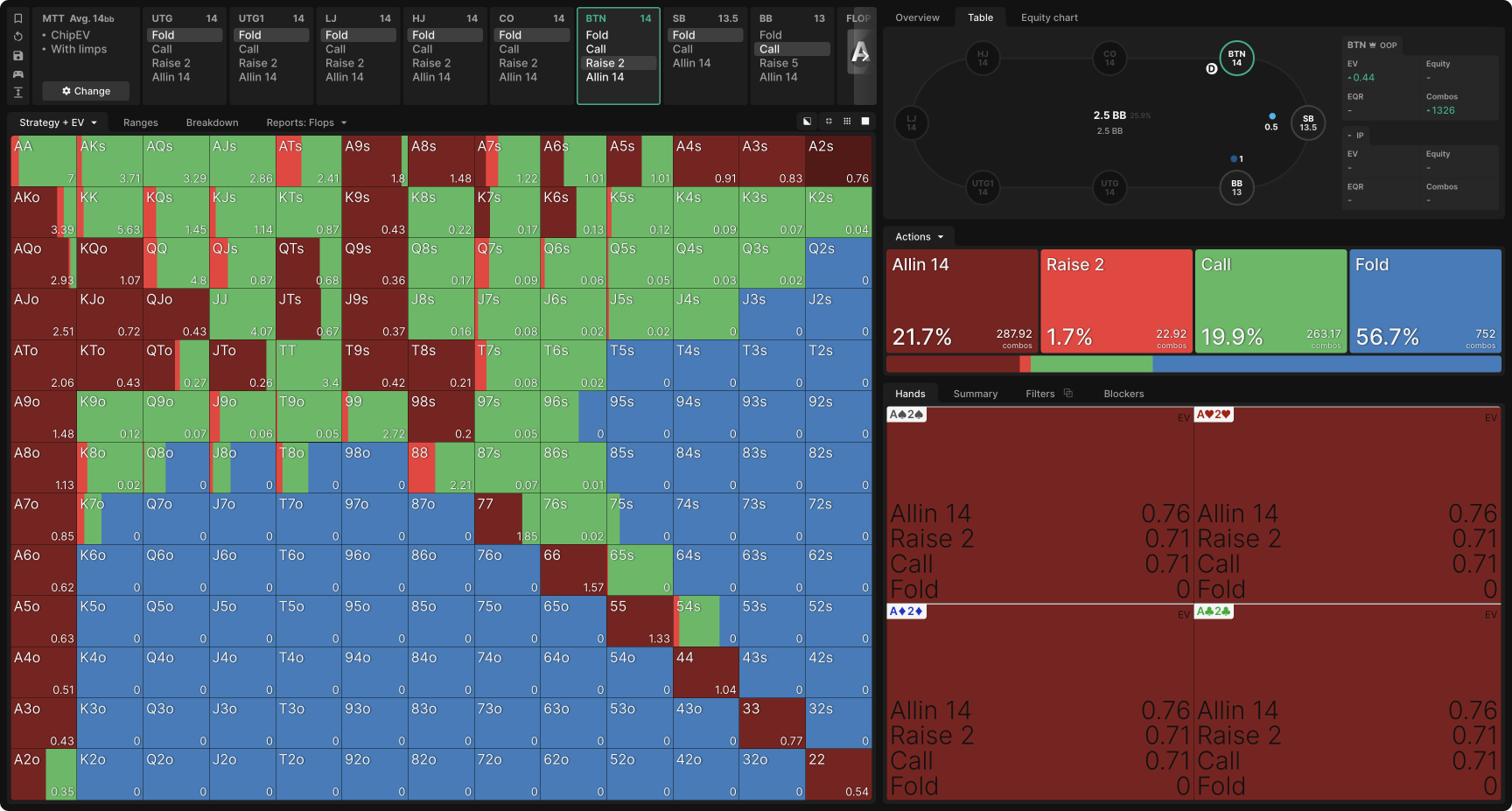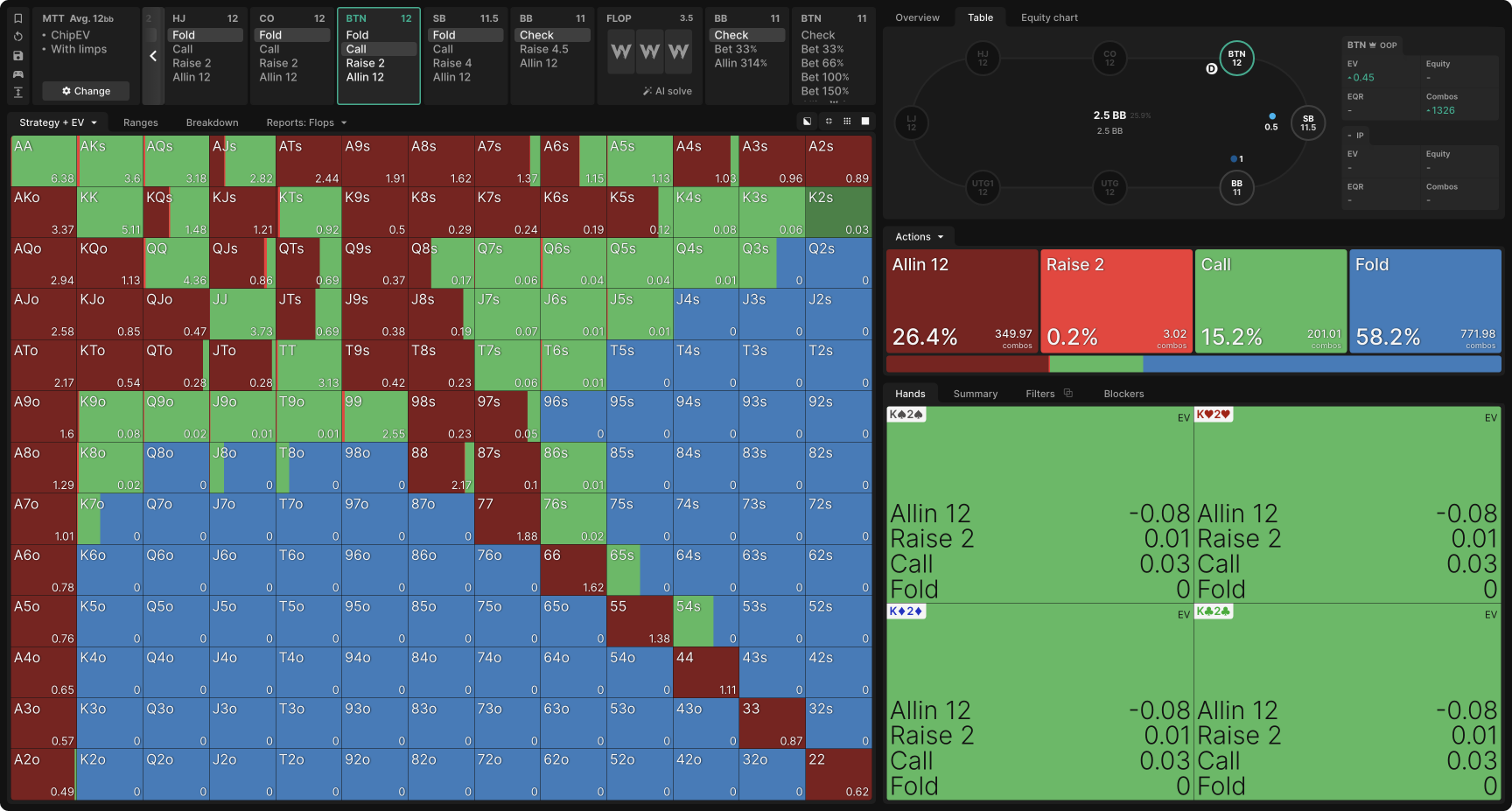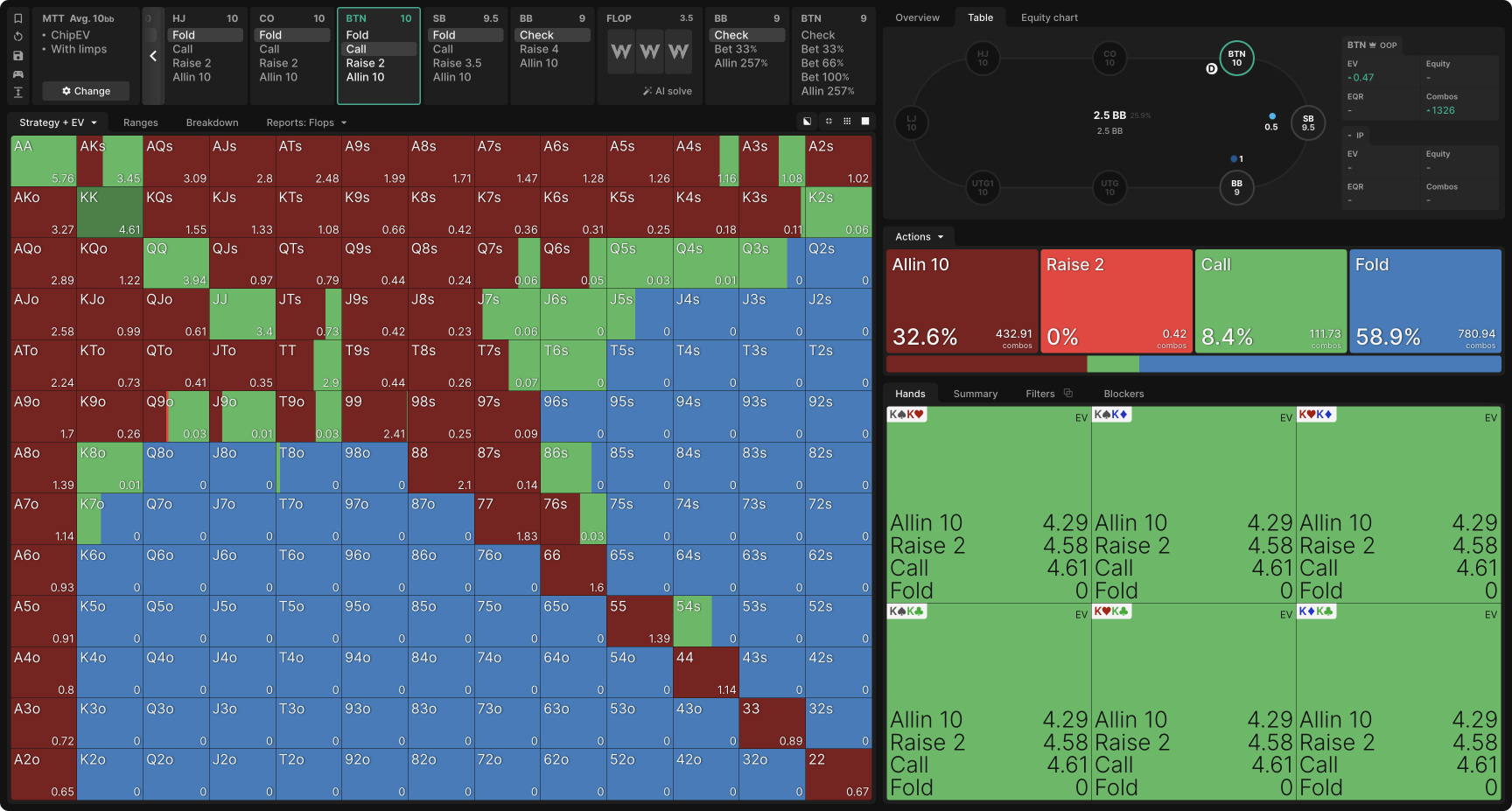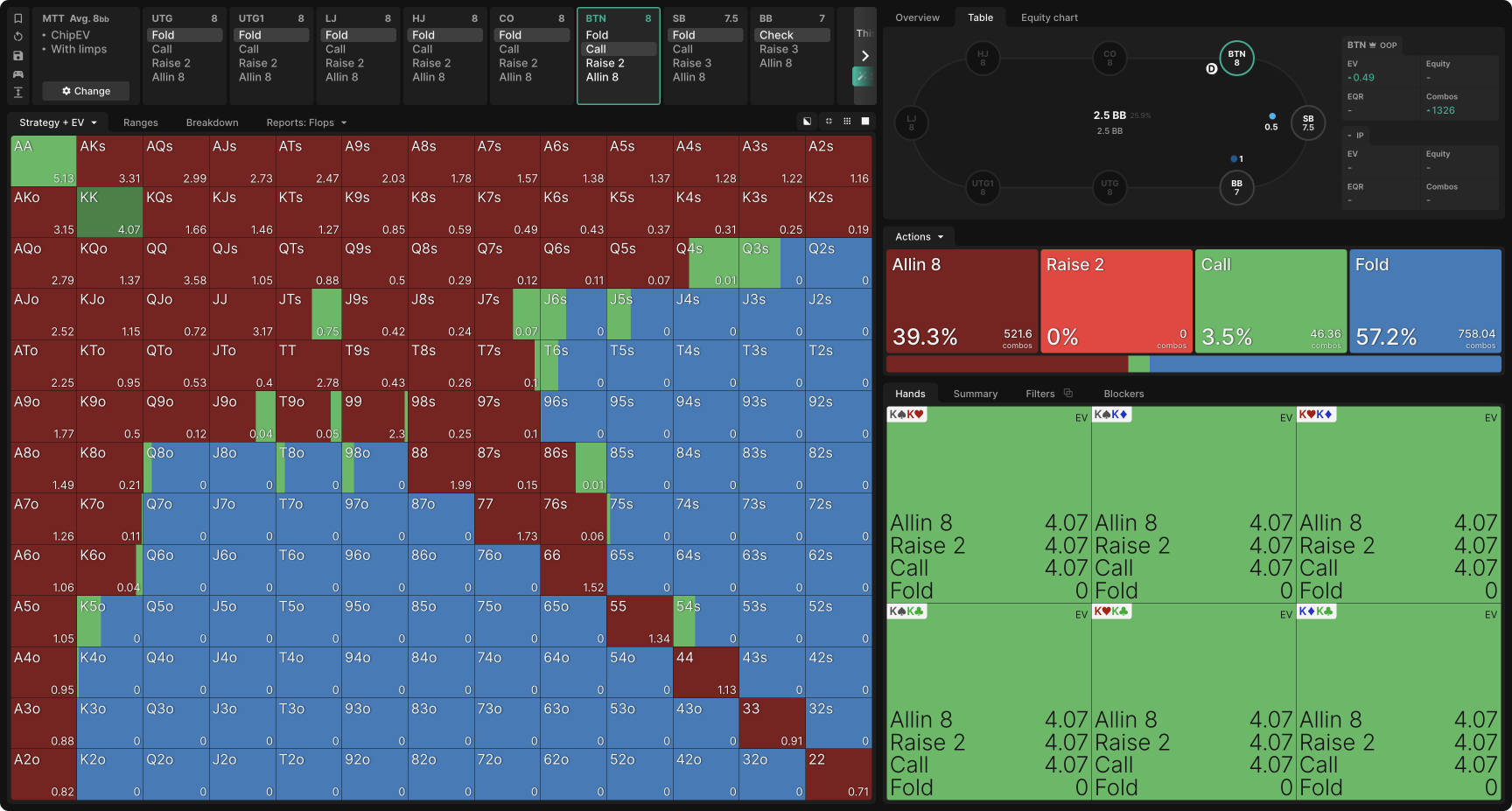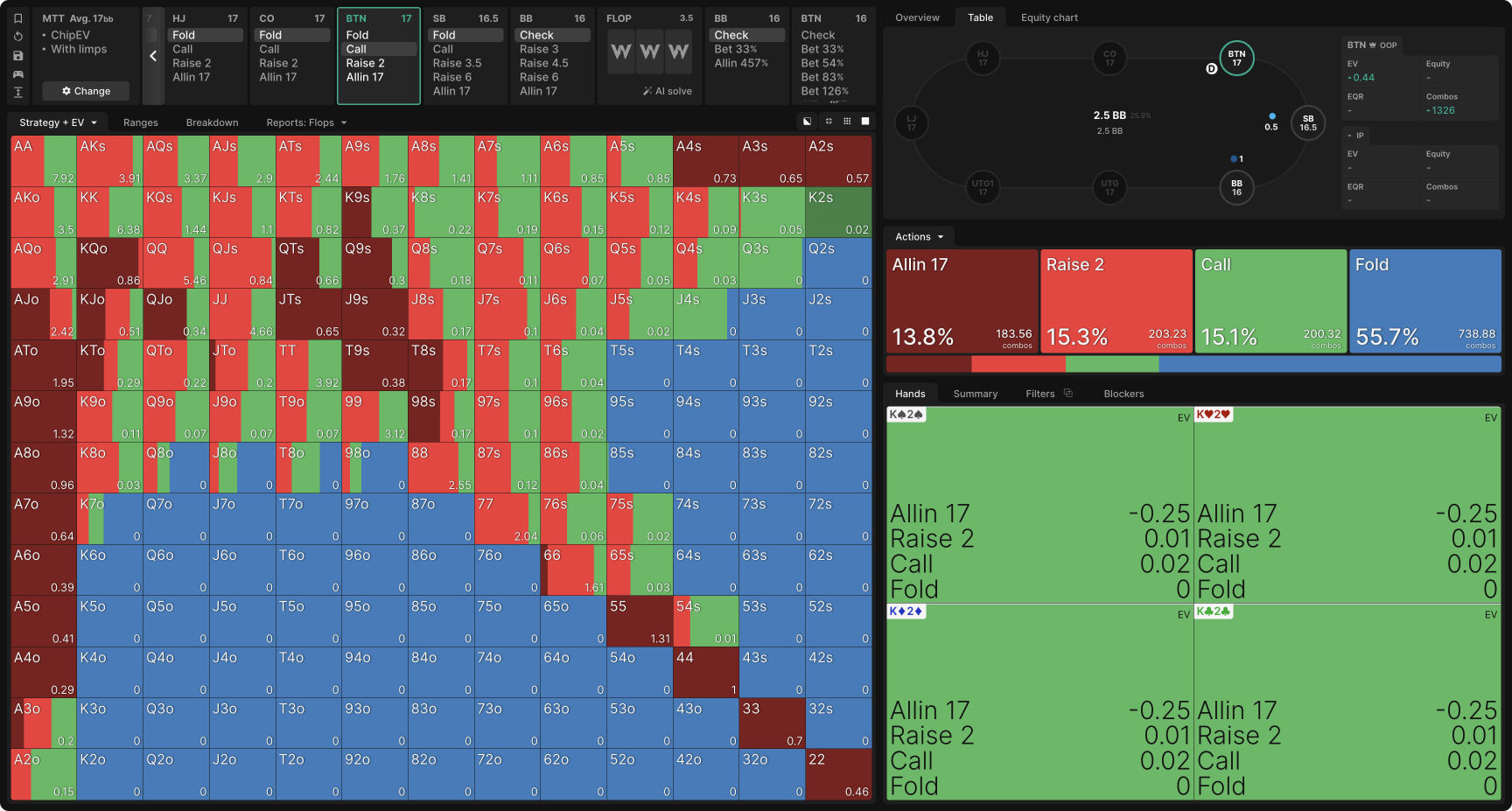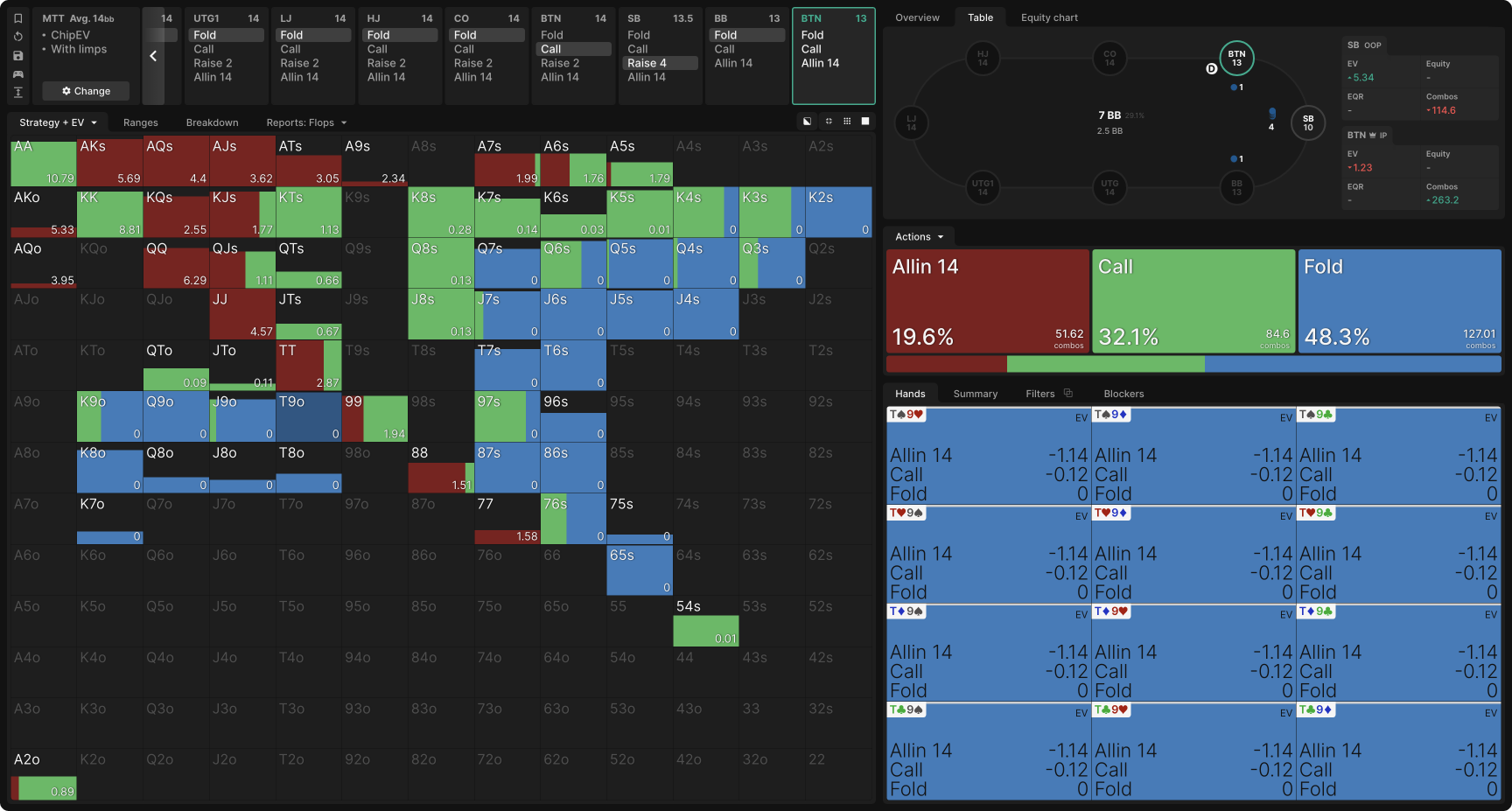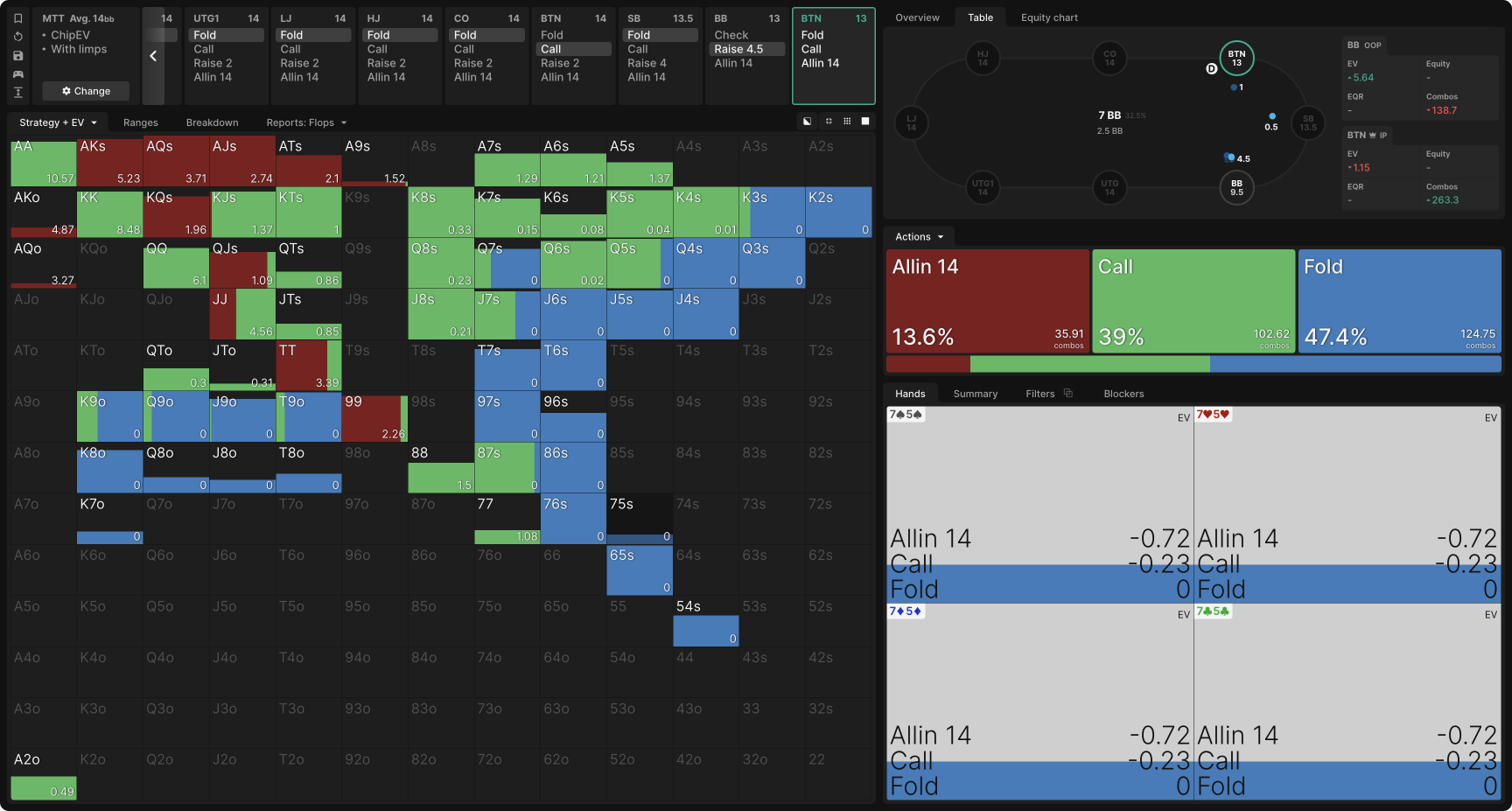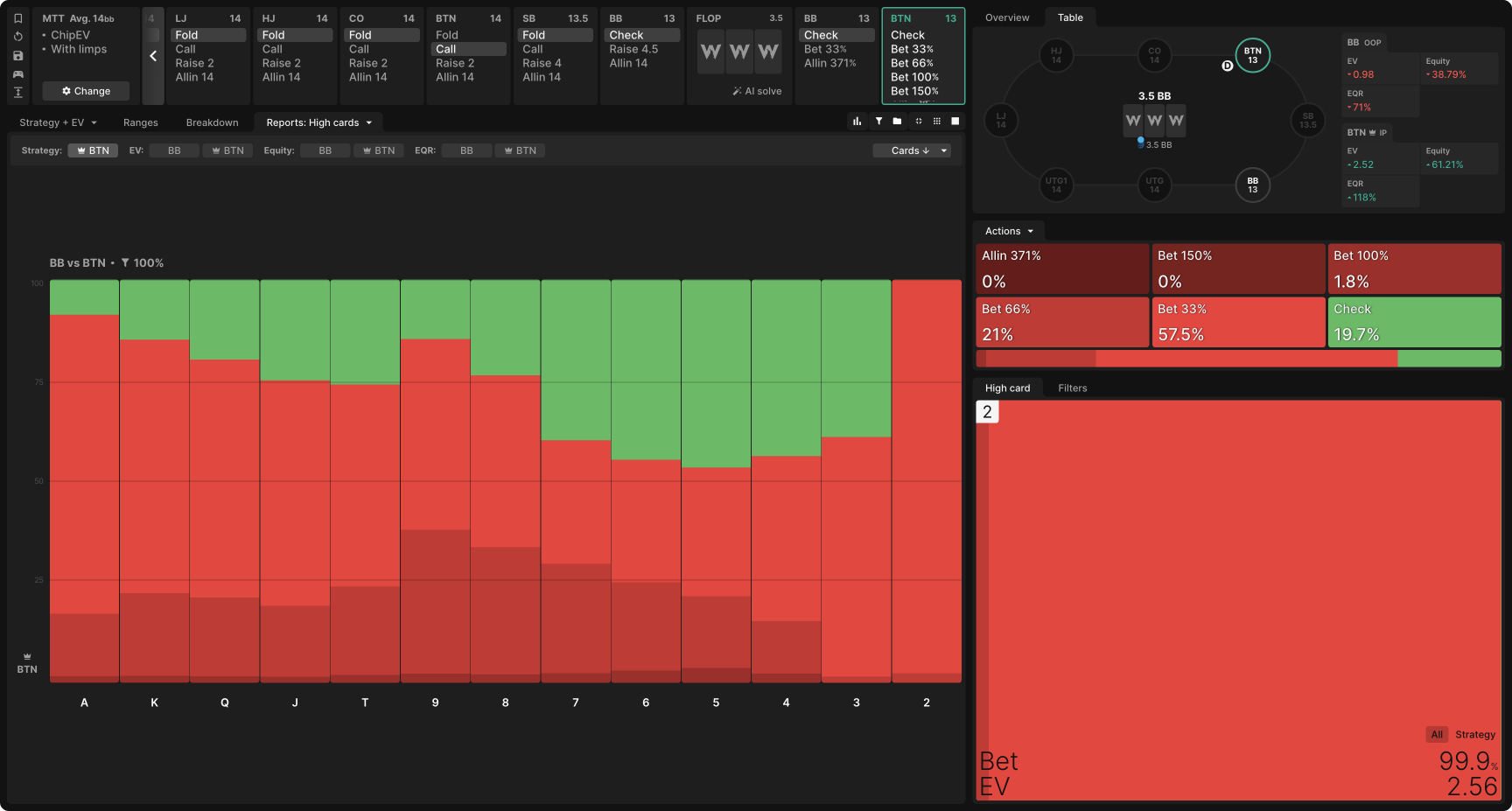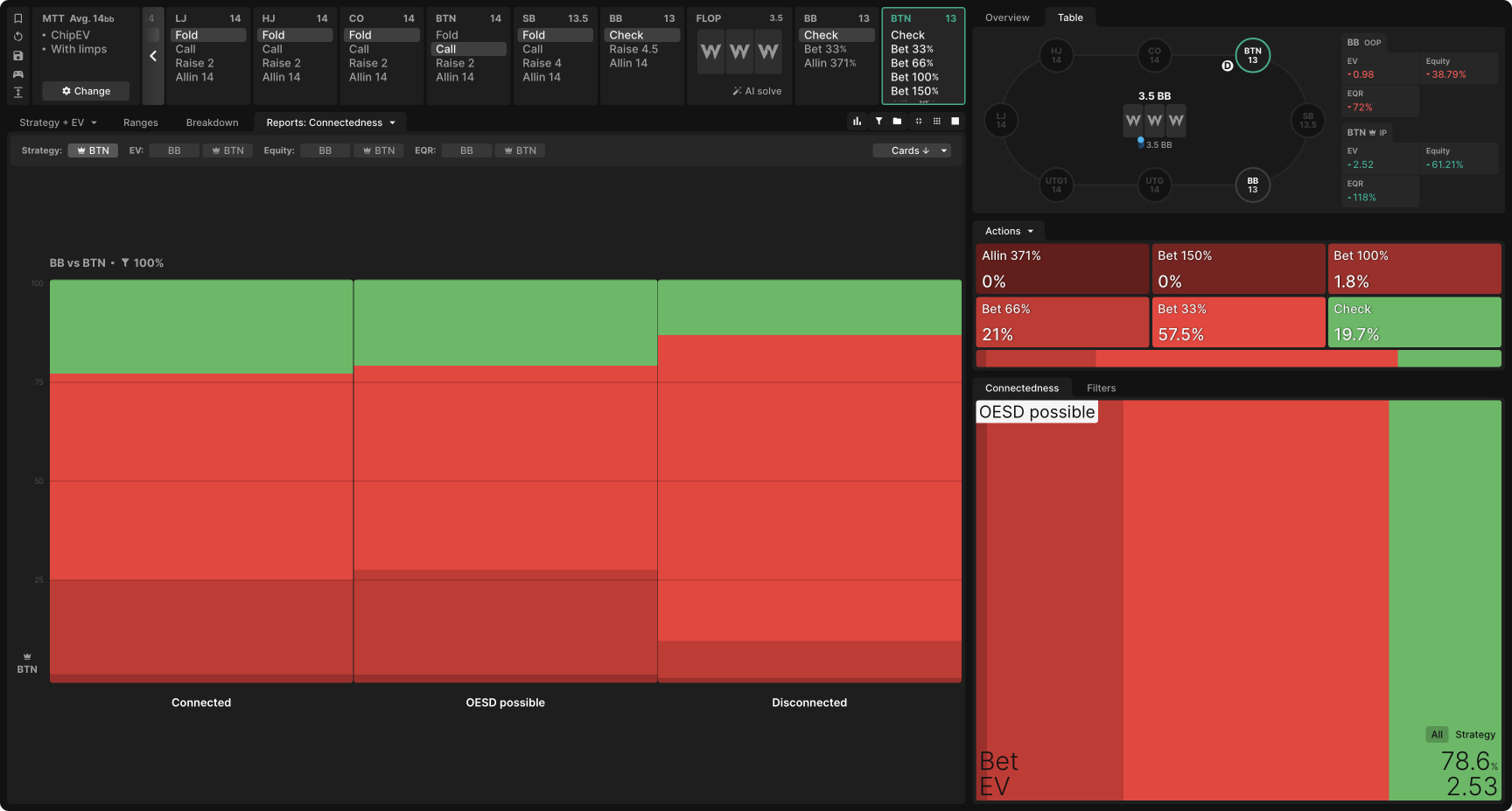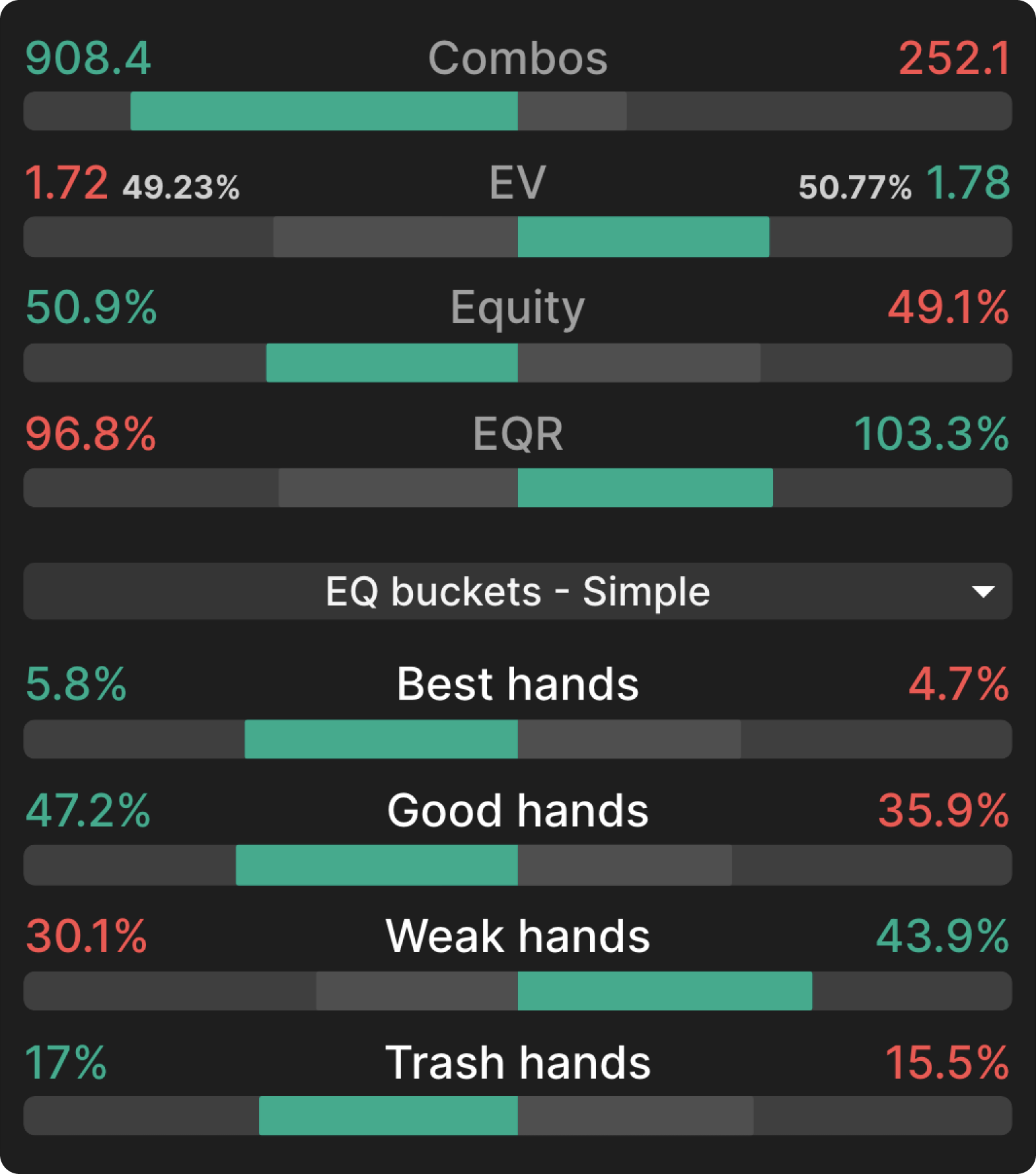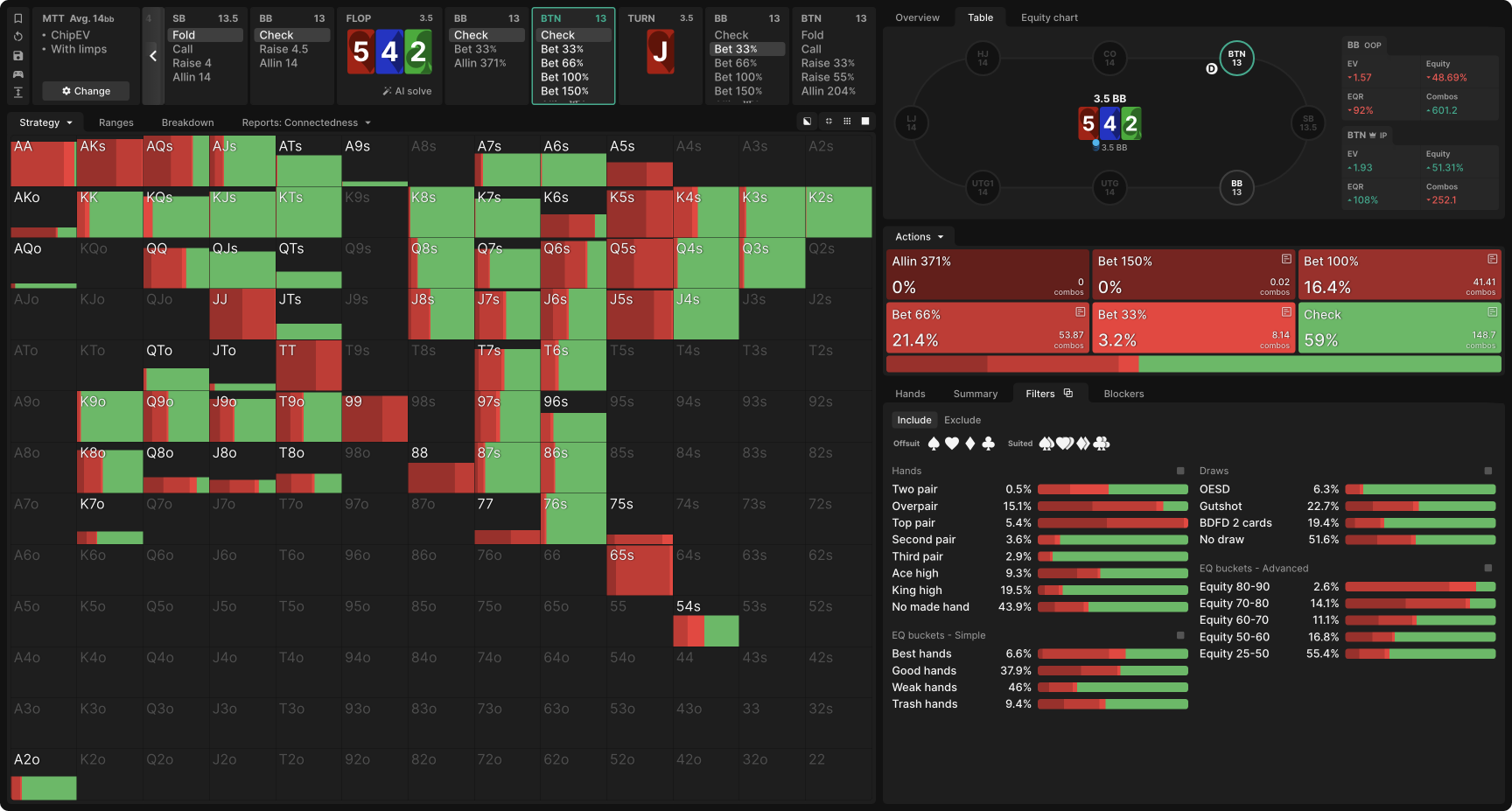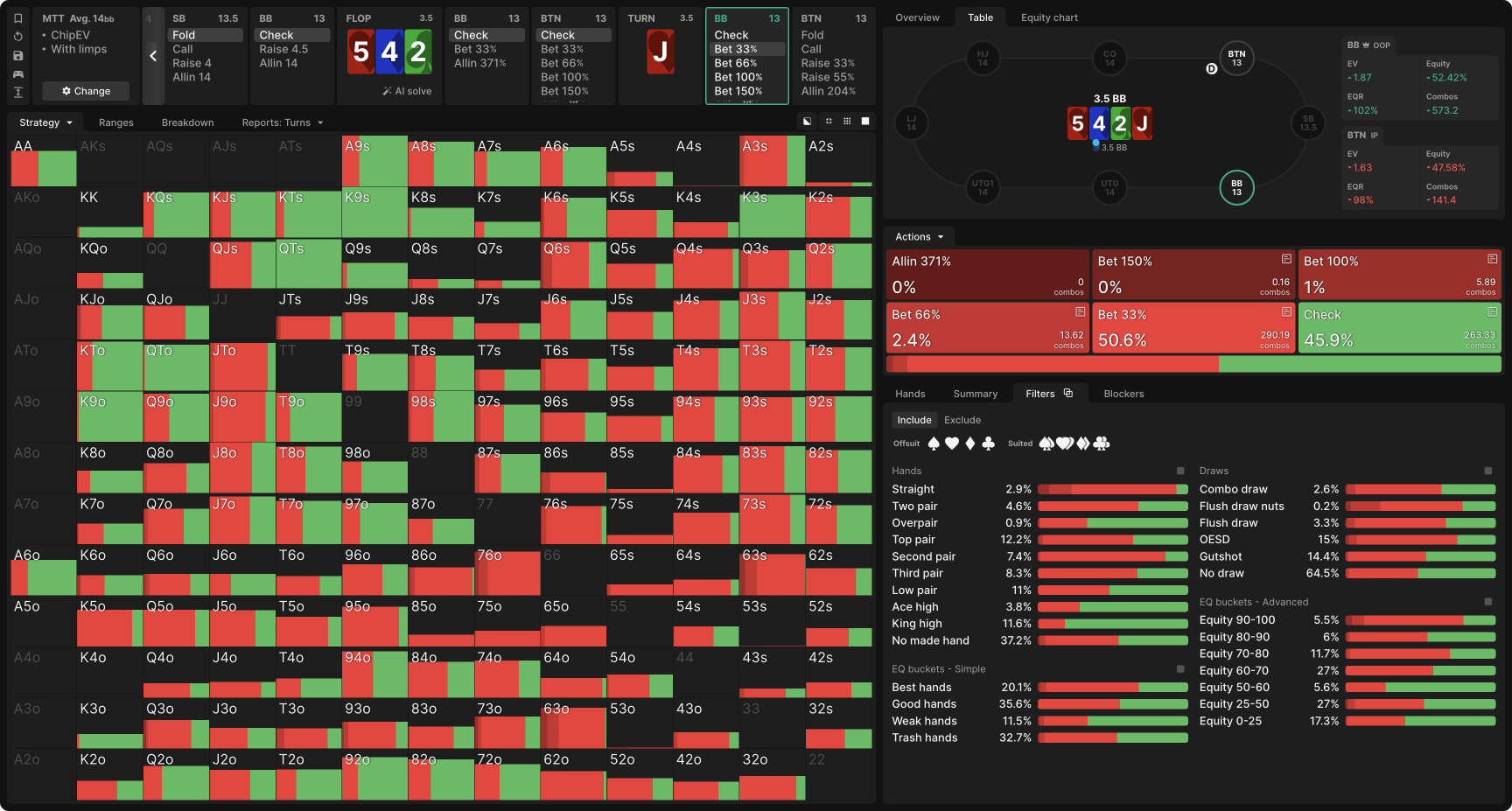The Curious Case of Open-Limping Buttons
Before the advent of solvers, open-limping was considered the province of passive, gambley recreational players who just wanted to see more flops. And to be fair, that’s mostly what it was and still is. Raising when first into the pot offers enormous benefits. At best, you can win the blinds and antes uncontested. Even when you don’t, you deny equity to players behind you, most notably the blinds, who would otherwise get a cheap or free look at the flop.
There are situations where solvers develop substantial open-limping ranges, however, which has prompted many human players to reconsider the play’s validity. These solver-approved limps appear most frequently in late position, shallow stacked strategies. Let’s explore the curious case of open-limping.
Limping makes the most sense in late position because there are fewer players behind you to whom you would deny equity with a raise. Especially when short stacked, a min-raise from the BTN mostly results in playing heads up against the BB. Limping usually has the same result with a lower cost, enabling you to VPIPVPIP
An online poker acronym which stands for ‘Voluntarily Put In Pot’, a statistic that measures the frequency with which a player voluntarily puts money into the pot preflop. a slightly wider range.
Open-limping the BTN gets you heads up with BB nearly as often as raising, at half the cost!
Limping off a shallow stack can also preserve your equity and the value of your position. The shorter the effective stack, the wider a range the blinds can shove over your open-raises. It’s a disaster when you lose the 2bb you wagered without even seeing a flop, but even if you call the shove, you can no longer use your position to over-realize your equity.
Equity Position
Limping off a shallow stack can also preserve your equity and the value of your position. The shorter the effective stack, the wider a range the blinds can shove over your open-raises. It’s a disaster when you lose the 2bb you wagered without even seeing a flop, but even if you call the shove, you can no longer use your position to over-realize your equity.
Equity
Position
If you only limped hands that you weren’t excited about getting all-in preflop, the blinds could exploit you with aggressive raises. So, a balanced limping strategy includes traps with very strong hands that would like to induce these raises and are not especially vulnerable to allowing the blinds a cheap flop with their worst hands. Big pairs are the natural candidates for this, but suited broadway hands also retain their equity well in a limped pot.
This 14bb ChipEV strategy for BTN illustrates the above points nicely. Notice how the limping range is polar, consisting of the big pairs and suited broadway traps as well as many weak hands—most of them suited—that would fold to a shove if they opened for a raise.
Short stacked limping ranges are polar, supplemented by shoves from middling hands.
The middle of BTN’s range, consisting primarily of hands too strong to raise-fold but not so strong they want to induce restealsResteal
A preflop 3-bet from late position or the blinds. The opening raise attempts to “steal” the pot, while the “resteal” attempts to take down the opener’s raise preflop., mostly shoves. A few very strong hands like AKo and AQo also slot into this range because they retain their equity not as well as their suited counterparts and so play poorly in limped pots.
BTN’s 12bb range follows the same patterns, though with more shoves thanks to the better risk:reward ratio.
With 10bb, shoving mostly overtakes limping, with only the very weakest and strongest hands preferring to call.
This effect is even more extreme at 8bb. Below this threshold, limping is no longer on the table, as you’re not deep enough to fold to a shove with any hand after limping.
Moving in the opposite direction, we see that with 17bb stacks, min-raising becomes more appealing, with very few hands showing a strict preference for limping. Among other things, open-limping big pairs is more of a liability with deeper stacks, as these hands prefer to play with a low SPR after the flop. The deeper you are, the more important it is to start building the pot before the flop.
The deeper you are, the more important it is to start building the pot before the flop.
Responding to a Raise After Limping
If one of the blinds raises all-in after you limp, your response is straightforward: you call with your better hands and fold the rest. But you may also face a smaller raise, and then things get a little trickier.
Here’s BTN’s response, after limping, to a 4bb raise from SB off a 14bb stack:
As with the initial limp, we see shoves from the middle of BTN’s range and calls from hands that aren’t strong enough to shove, plus a few traps. Only the very best hands trap because with 7bb already in the pot, taking it down immediately is a great outcome, even with QQ or AKs. BTN, thanks to their pot odds and position, can afford to call with a transparently modest range.
BTN’s response facing a BB raise (to 4.5bb) is similar, with more calling and less shoving, because BB’s raising range is more polar than SB’s. With no third player to push out of the pot, BB has less incentive to raise middling hands, which could just as well see a flop for free. QQ and JJ perform less well against the top of BB’s range and dominate more of the bottom, making them respectively less appealing as shoves and more appealing as calls than they would be against SB.
Heads Up Postflop in a Limped Pot
Heads up play against the BB in a limped pot plays out similarly to a single-raised pot (SRP) for the same reasons. BTN, as the player who VPIPed preflop, has the nuts and equity advantages on most flops along with the positional advantage. BB’s range is even weaker than it would be in a SRP because they have not yet had the opportunity to fold their junkiest hands.
Heads up play in a limped pot plays out similarly to a single-raised pot.
As a result, BB should mostly check, and BTN should mostly bet small.
The exceptions are the rarely occurring low card flops, especially the more coordinated ones.
BTN’s highest check back frequency is on 542r, where BB actually enjoys the nuts advantage along with a slight equity advantage:
Examining BTN’s strategy on this flop provides some insight into constructing a checking range in the exceptional cases where this is necessary.
BTN bets a mostly polar range, and so prefers larger bet sizes, which can push BB off hands as strong as two overcards with a gutshot. There’s very little slowplaying, as the board is dynamic and most of BTN’s best hands are top pair or overpairs that are vulnerable not only to straight draws but to overcards as well.
Second pair, bottom pair, and Ace-x gutshots aren’t as attracted to betting. Not because they’re in danger of getting pushed off their equity—they always call if BB shoves over the top of the bet—but because nothing especially good happens when they bet. BB never folds better, nor are these hands big favorites when called or raised.
Playing Later Streets
On the 542r flop, BTN’s middling hands do better checking and then calling or raising turn bets. The shortage of strong hands in BTN’s checking range gives BB a lot of incentive to bet turns, and inducing those bets is where BTN’s middling hands generate their value.
For example, here’s BB’s betting range on a J♥ turn if the flop checks through. Note that it includes not just bluffs and semi-bluffs but also value bets from most second and bottom pairs. So when BTN checks a hand like K4 on the flop, they still get value from second-best hands on most turns:
In fact, most turn and river scenarios will play out similarly to how they would in a single-raised pot between BTN and BB. That means you can apply principles from the following articles to guide your strategy:
Three-Way Limped Pots
We won’t be able to tackle three-way limped pots between the BTN and both blinds with solver assistance yet, so we’ll have to rely on common heuristics in multiway pots. Let’s look at where the advantages lie:
- Positional advantage. This, of course, lies with the BTN. All else equal, this should make both blinds checking the flop and the BTN betting small a common pattern.
- Equity advantage. This will usually lie with the BTN as well, though importantly, they will not have such a large advantage that they can bet their entire range on most flops. Equity advantage can generally be assigned based on who took on the most risk preflop. BTN risked an entire big blind plus a raise from two players behind them. SB risked half a big blind plus a raise from one player. The BB took no risk at all and so has by far the weakest range. As we saw above, this equity distribution can change on specific flops, but it is a strong default based on the preflop action.
- Nut advantage. BTN has the most big pairs and big unpaired cards in their range, which—especially with a low SPR—means they will flop nutty hands more often than the blinds. Nut advantage is more sensitive to board texture than equity advantage, however, so you’ll need to adjust accordingly.
Conclusion
Open-limping may feel fishy, but once you dig into the details, it makes sense. The resulting range dynamics should largely mimic the single-raised pots to which you are accustomed.
When you are short stacked on the BTN, consider experimenting with limps for the hands you would ordinarily min-raise, whilst maintaining your open-shoving range as normal. You don’t have to get the details exactly right; you just have to navigate unfamiliar situations better than your opponents. And now that you’ve learned a bit about limped pots, they should be less unfamiliar to you. 😉
For a bigger edge, practice playing limped pots with these drills.
Author
Andrew Brokos
Andrew Brokos has been a professional poker player, coach, and author for over 15 years. He co-hosts the Thinking Poker Podcast and is the author of the Play Optimal Poker books, among others.



